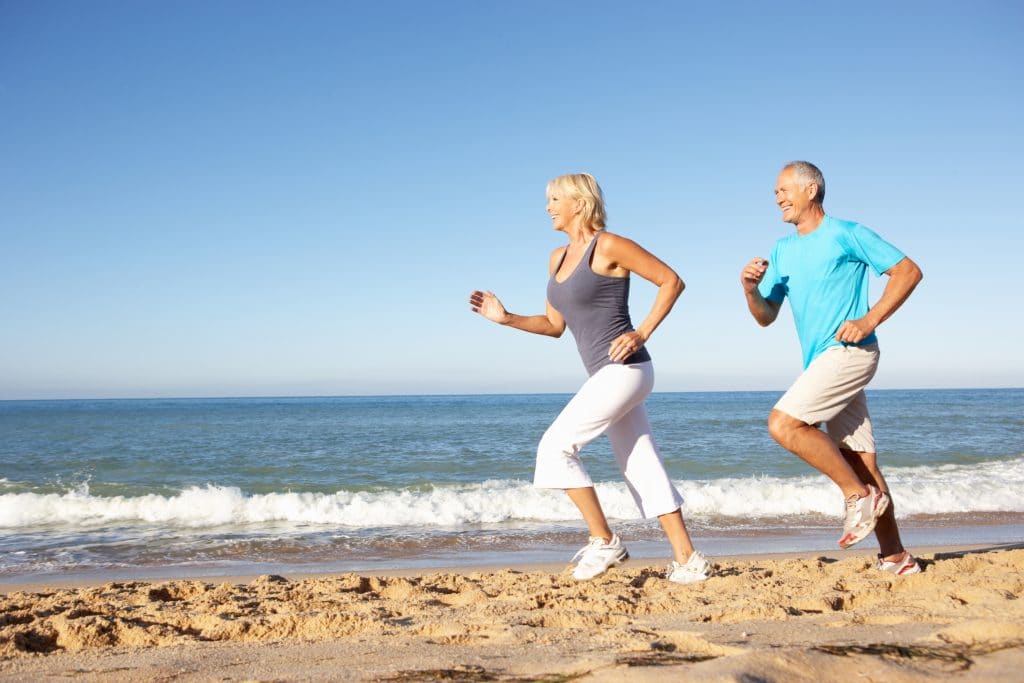How physical activity helps diabetes
Here we explain how physical activity helps diabetes, and ways to incorporate it into your lifestyle.
Physical activity burns energy accrued from your diet that would otherwise be deposited as fat around your waistline. This means regular exercise is an important means to achieve and maintain a healthy weight and improve your body’s composition.
Even for those without an expanding waistline, engaging in little physical activity increases their risk of developing diabetes. But you can reduce the risk of diabetes and its complications by modestly increasing your level of regular physical activity, regardless of whether you lose weight or not.
When you are active, your muscles burn energy. The first fuel tank your body uses is the one stored in the muscles themselves. To keep going once exercise has burned these stores, your liver releases glucose into the blood stream, and fat metabolism increases so it can fuel the muscles. Your muscles then take up, burn and breakdown fats and glucose from the blood stream. When you have finished exercising, your muscles continue to take up large amounts of fat and glucose from the blood stream to replenish their stores and prepare for their next exertion. This extra uptake of glucose is how physical activity helps diabetes, as it means less work for the pancreas, as well as less fat around your waistline.
When we use our muscles regularly, it enhances their ability to absorb glucose and increases their sensitivity to insulin. This means the pancreas doesn’t need to work quite as hard and release as much insulin to regulate your blood sugar levels.
Inactivity and its impact on diabetes
People who sit for long periods every day, with little muscle activity at all, have an increased risk of diabetes. This is particularly the case where sitting is unbroken for long periods (such as when you sit at your desk or in front of the television).
Experts believe that because your muscles are inactive, more of the burden of metabolizing the food you eat is placed on the pancreas. Therefore more calories in your diet end up in the fat around your waistline, instead of being burnt by your muscles during physical activity.
Staying on your feet when you can and breaking up long periods of sitting by getting up frequently may be as important for preventing diabetes as engaging in structured exercise is.
Those who sit less than 4 hours per day but don’t exercise appear to be at least as healthy as those who exercise at least 5 hours per week but spend most of their day sitting down.
Importantly, it is still possible to improve your health as a result of increasing physical activity levels without necessarily being bigger, stronger, or faster.
When people with type 2 diabetes exercise regularly, for example, they can reduce risk factors for complications including high cholesterol, glucose and blood pressure levels without noticeably improving traditional markers of fitness such as strength or endurance.
Ways to increase your physical activity
So that is how physical activity helps diabetes. But how can you live a more active life?
You can achieve the same physical activity health benefits whether you perform structured daily exercise sessions, or have unstructured activity spread over the course of your day as part of your life or job. The important part is just being active on a regular basis. Some ways to increase your physical activity include:
- walking the kids to school
- walking or cycling to work
- taking the stairs instead of the lift
- getting off the bus one stop earlier and walking home
- parking a little further away from your destination and walking the difference
- speaking to your colleagues face-to-face rather than sending an email
- collecting your printing yourself rather than waiting for someone to bring it to you
- Breaking up your sitting time at least every half an hour. Just standing up regularly uses your muscles and expends excess energy. The less you sit around, the more healthy you can become.
Exercise is probably the easiest way to ensure you engage in physical activities that build your health and resilience against diabetes.
Some form of exercise is generally required to become really fit. There are many different kinds of exercise, from walking and swimming, to sports and more formal regimens in a gym. Each has its own benefits and limitations, and probably achieves their best outcomes when different modalities are combined to target your individual requirements. It doesn’t need to be very hard.
References
- Cris A. Slentz, Charles J. Tanner, Lori A. Bateman, Michael T. Durheim, Kim M. Huffman, Joseph A. Houmard, and William E. Kraus. (2009) Effects of Exercise Training Intensity on Pancreatic β-Cell Function. Diabetes Care: 32 (10); 1807–1811.
Available here: http://www.ncbi.nlm.nih.gov/pmc/articles/PMC2752909/
Last reviewed 02/Jun/2017
Editor
Latest posts by Editor (see all)
- Oily fish and diabetes prevention - 04/06/20
- Manage the andropause - 11/12/17
- Testing testosterone levels - 07/12/17
